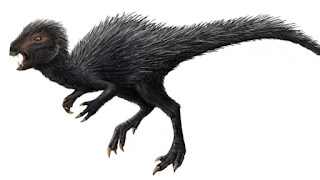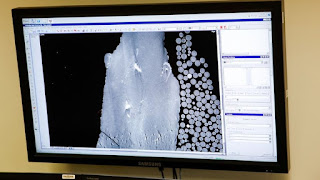Scientists have used high-power X-rays to "see inside" an exquisite and complete dinosaur specimen.
The skeleton belongs to a small, plant-eating dinosaur which lived 200 million years ago - at the beginning of the Jurassic Period.
Although this species was widespread at the time, scientists have largely had to rely on incomplete fossils.
The analysis was carried out at the ESRF facility in Grenoble, France, and showed that the specimen was juvenile.
The skeleton is too small and fragile, and the rocks around it too hard, to allow it to be studied by conventional means.
In addition, the rock matrix in which the fossil is preserved contains trapped minerals which prevented it from being scanned in a standard CT scanner.
The specimen was discovered in a stream bed on a farm in the Eastern Cape province of South Africa by palaeontologist Billy de Klerk.
"There's still a lot we don't know about early plant-eating dinosaurs," said Prof Jonah Choiniere from the University of the Witwatersrand in Johannesburg, South Africa.
"We need new specimens like this one and new technology like the synchrotron to fill in those gaps."
Prof Choiniere, along with Dr Vincent Fernandez, from the ESRF (European Synchrotron), scanned the specimen with high-powered X-rays to understand how the species, Heterodontosaurus tucki, ate, moved, and breathed.
Scanning the fist-sized skull might allow the scientists to perform a 3D reconstruction of the animal's brain, offering insights into its lifestyle - including its sense of smell, and whether it was capable of complex behaviours.
The scientists think the diminutive dinosaur used its back teeth to grind down plant food. In other animals with similar anatomy, this requires the teeth to be replaced due to wear and tear.
The team members said they can now begin testing this theory and others regarding the dinosaur's biology and behaviour.













No comments:
Post a Comment
share your thoughts with us